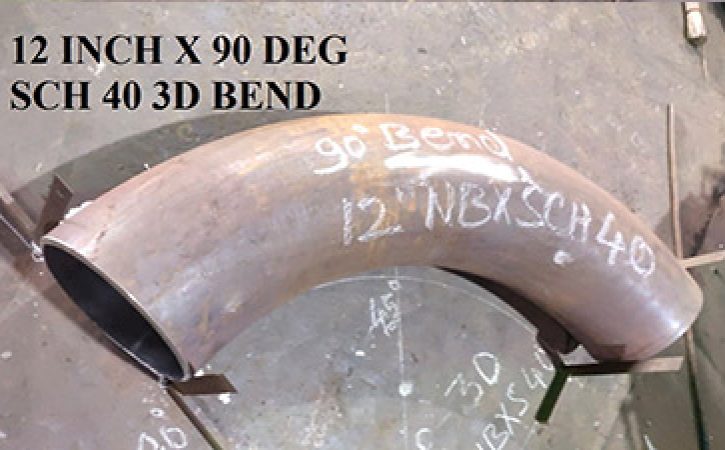
Mastering the Art of Precision: Unraveling the Wonders of 3D Pipe Bends
In the intricate world of piping systems, where precision and efficiency are paramount, the significance of 3D Pipe Bends cannot be overstated. These ingenious components play a pivotal role in seamlessly navigating the complexities of pipelines, ensuring optimal flow and structural integrity. In this comprehensive guide, we delve into the art and science of 3D Pipe Bends, exploring their applications, manufacturing processes, and the unparalleled benefits they bring to diverse industries.
Understanding the Basics:
The Anatomy of a 3D Pipe Bend
Before delving into the intricacies, let’s unravel the basic anatomy of a 3D Pipe Bend. Unlike traditional elbows that follow a standard radius, 3D Pipe Bends boast a unique design that offers a three times (3D) the nominal pipe size (NPS) radius. This distinctive feature allows for a smoother flow of fluids or gases, reducing turbulence and minimizing pressure drops within the pipeline.
Applications Across Industries
- Oil and Gas:
In the oil and gas sector, where precision and reliability are paramount, 3D Pipe Bends find extensive use. These bends facilitate the seamless navigation of pipelines around obstacles, ensuring a continuous and efficient flow of hydrocarbons.
- Chemical Processing:
The chemical industry relies on 3D Pipe Bends to navigate complex processing plants, where corrosive substances are commonplace. The unique design of these bends minimizes the risk of erosion and corrosion, enhancing the longevity of the piping system.
- Power Generation:
Power plants, whether thermal or nuclear, benefit from the use of 3D Pipe Bends in their intricate piping networks. The bends allow for efficient fluid or gas movement, optimizing energy transfer and reducing the overall strain on the system.
Manufacturing Excellence:
Precision Engineering of 3D Pipe Bends
The manufacturing process of 3D Pipe Bends demands a high level of precision and expertise. Typically fabricated from seamless pipes, these bends undergo meticulous forming processes to achieve the desired curvature. Cold bending and hot induction bending are two prevalent methods employed, each with its unique advantages.
- Cold Bending:
Cold bending involves curving the pipe at room temperature. This process is ideal for smaller diameter pipes and ensures minimal distortion. It is a cost-effective solution suitable for a wide range of applications.
- Hot Induction Bending:
In hot induction bending, the pipe is heated locally using an induction coil before being shaped around a predetermined radius. This method is preferred for larger diameter pipes and offers precise control over the bend’s dimensions, making it a popular choice for critical applications.
Material Selection for Optimal Performance
The choice of material for 3D Pipe Bends is crucial, considering the diverse environments they operate in. Common materials include carbon steel, stainless steel, and alloy steel, each selected based on factors such as corrosion resistance, temperature resistance, and overall durability. This careful selection ensures that the 3D Pipe Bends meet the specific demands of the industry they serve.
Benefits Beyond the Bend:
Improved Flow Dynamics
One of the primary advantages of incorporating 3D Pipe Bends in a piping system is the enhanced flow dynamics they offer. The gentle curvature reduces turbulence and pressure drops, promoting a smoother flow of fluids or gases. This not only improves operational efficiency but also minimizes the risk of erosion and corrosion within the pipeline.
Space Optimization
Traditional elbows with a fixed radius often pose challenges in tight spaces or constrained layouts. 3D Pipe Bends, with their flexible and adaptable design, prove to be a space-saving solution. They can be customized to navigate around obstacles without compromising the overall efficiency of the piping system.
Longevity and Reliability
The durability of 3D Pipe Bends is a testament to their design and quality of manufacturing. By minimizing stress points and distributing forces evenly, these bends exhibit a longer lifespan compared to their counterparts. This longevity translates to reduced maintenance costs and enhanced overall reliability of the piping system.
Installation Best Practices:
Ensuring a Seamless Integration
While the benefits of 3D Pipe Bends are substantial, their proper installation is paramount to unlocking their full potential. Adhering to best practices during installation ensures that the bends perform optimally throughout their lifecycle.
- Alignment and Support:
Achieving proper alignment during installation is crucial for maintaining the integrity of the piping system. Additionally, providing adequate support to the 3D Pipe Bends prevents undue stress and ensures stability.
- Welding Excellence:
The welding process plays a critical role in the overall performance of 3D Pipe Bends. Employing qualified welders and adhering to industry standards ensures a robust connection that can withstand the demands of the application.
Future Innovations:
The Evolving Landscape of 3D Pipe Bends
As industries continue to evolve, so too does the technology and innovation surrounding 3D Pipe Bends. Researchers and engineers are continually exploring ways to enhance the design and manufacturing processes, aiming to further optimize performance, reduce environmental impact, and expand the range of applications.
Sustainable Solutions
With a growing emphasis on sustainability, there is a burgeoning interest in developing eco-friendly materials and manufacturing methods for 3D Pipe Bends. This not only aligns with global environmental goals but also positions these components as future-ready solutions for industries striving to reduce their carbon footprint.
Integration with Digital Technologies
The integration of digital technologies such as advanced simulations and augmented reality is poised to revolutionize the design and installation of 3D Pipe Bends. Virtual prototypes and real-time data analytics will enable engineers to optimize designs and predict performance with unprecedented accuracy.
Conclusion:
In the complex world of piping systems, 3D Pipe Bends stand as a testament to human ingenuity and engineering excellence. Their unique design, precision manufacturing, and myriad benefits make them indispensable components across diverse industries. As we celebrate the one-year milestone of this comprehensive guide, we anticipate the continued evolution of 3D Pipe Bends, shaping the future of fluid dynamics and pipeline efficiency.
Category
Subscribe
Subscribe our newsletter for latest news & photos. Let's stay updated!






